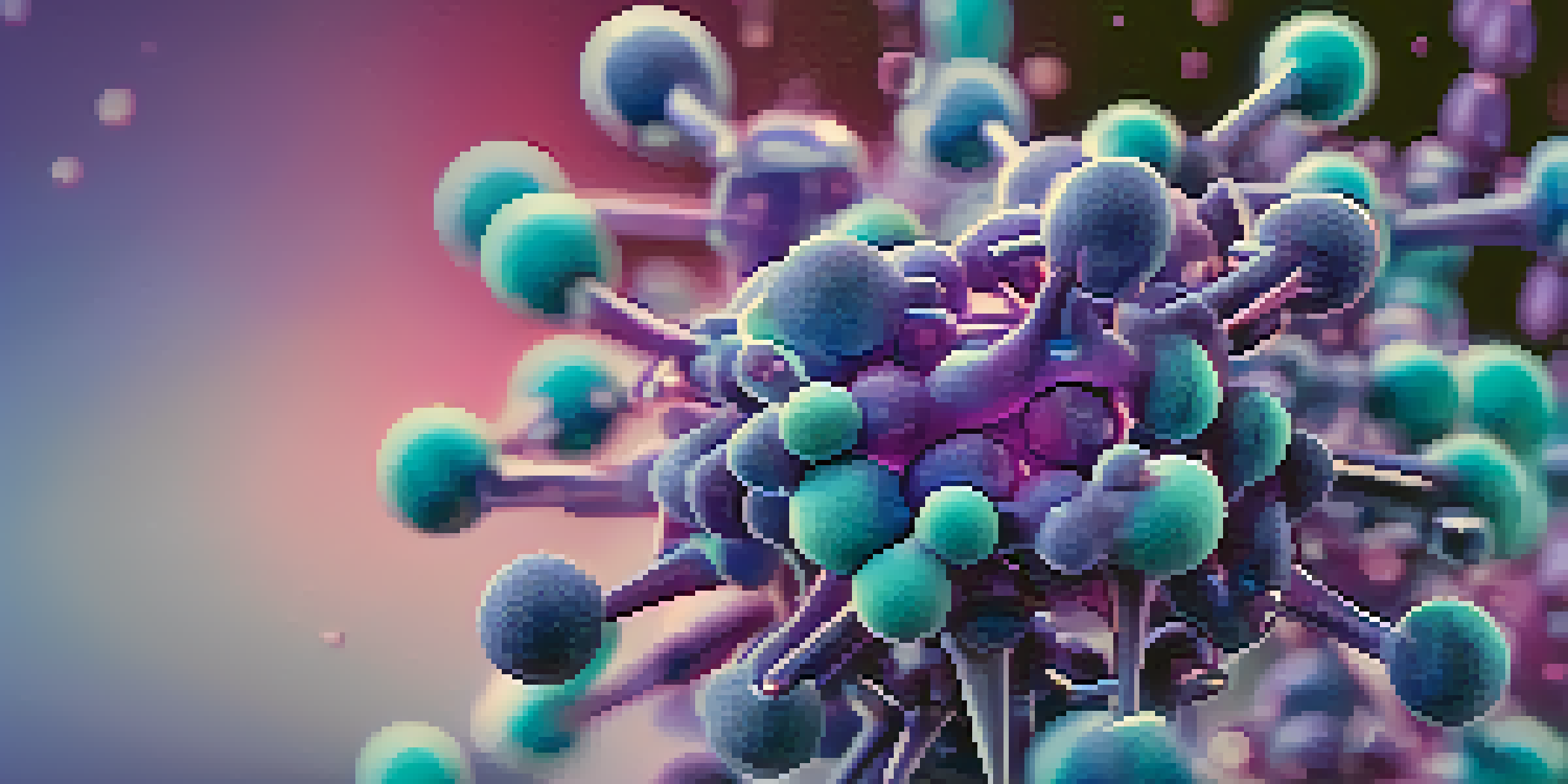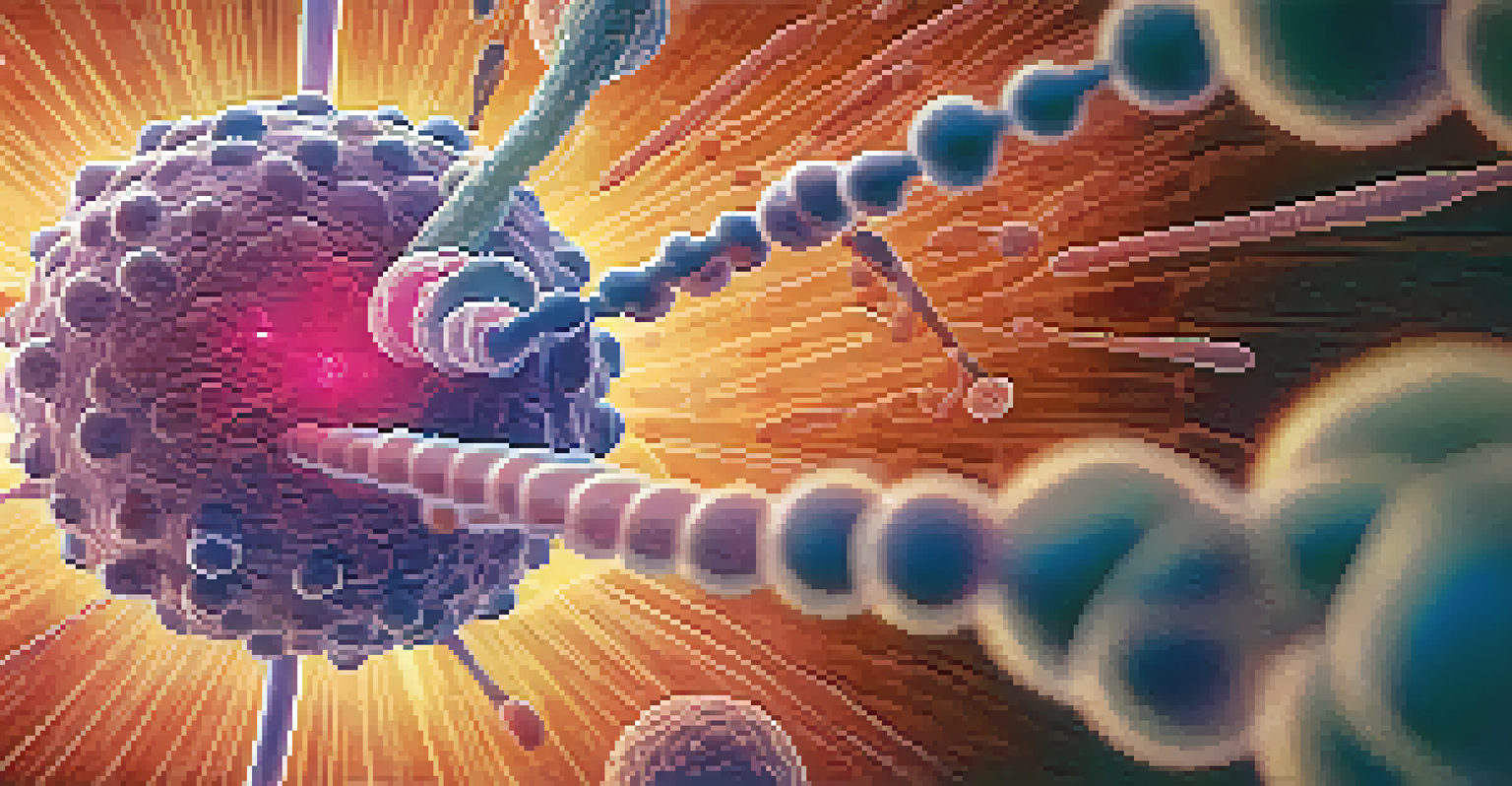Targeted Drug Delivery: The Role of Antibody-Drug Conjugates

What Are Antibody-Drug Conjugates (ADCs)?
Antibody-drug conjugates, or ADCs, are a pioneering class of drugs designed to deliver chemotherapy directly to cancer cells. By linking an antibody, which can specifically recognize cancer cells, to a potent cytotoxic drug, ADCs create a targeted method of treatment. This targeted delivery minimizes damage to healthy cells, a common issue with traditional chemotherapy.
The greatest weapon against stress is our ability to choose one thought over another.
The structure of an ADC typically consists of three key components: an antibody, a cytotoxic drug, and a linker that joins them. The antibody acts as a homing device, guiding the drug to the cancer cell, while the linker ensures that the drug remains inactive until it reaches its target. This innovative approach enhances the effectiveness of cancer treatment and reduces side effects, making the therapy more tolerable for patients.
Ultimately, ADCs represent a blend of immunology and oncology, allowing for more personalized treatment plans. As research continues to evolve, the potential for ADCs to treat various types of cancer is becoming increasingly promising.
The Mechanism of Action Behind ADCs
Understanding how ADCs work is crucial for appreciating their role in targeted drug delivery. When an ADC enters the bloodstream, the antibody component seeks out specific antigens on cancer cells. Upon binding to these antigens, the ADC is internalized into the cell, where the cytotoxic drug is released, directly killing the cancer cell from within.

This mechanism contrasts sharply with traditional chemotherapy, where drugs circulate throughout the body and can harm both cancerous and healthy cells. By localizing the action of the drug, ADCs can effectively reduce systemic toxicity and improve patient outcomes. It's like delivering a package right to the doorstep, instead of dropping it off at the wrong address.
ADCs Target Cancer Cells Directly
Antibody-drug conjugates (ADCs) deliver chemotherapy specifically to cancer cells, minimizing damage to healthy tissues.
Moreover, ADCs can be designed to target different types of cancer, paving the way for more effective therapies tailored to individual patient needs. This specificity not only enhances the efficacy of the treatment but also helps in monitoring the disease's response to therapy.
The Advantages of Targeted Drug Delivery
Targeted drug delivery via ADCs offers several significant advantages over conventional chemotherapy. One of the most compelling benefits is the ability to minimize side effects, as the drug is concentrated in cancer cells rather than affecting healthy tissues. Patients often report feeling better during treatment, which can lead to improved adherence to therapy.
Innovation distinguishes between a leader and a follower.
Additionally, targeted delivery can enhance treatment effectiveness. By ensuring that high concentrations of the cytotoxic drug are delivered directly to the tumor, ADCs can lead to better tumor control and potentially higher survival rates. This precision in treatment is similar to using a sniper instead of a shotgun—aiming directly at the target for maximum impact.
Furthermore, the adaptable nature of ADCs means they can be modified to enhance their effectiveness or to overcome resistance mechanisms that some tumors develop. This adaptability is crucial as we strive for more effective and personalized cancer therapies.
Current Applications of ADCs in Cancer Treatment
ADCs have made significant strides in the treatment of various cancers, including breast cancer, lymphoma, and leukemia. For instance, drugs like Trastuzumab emtansine (Kadcyla) have been approved for HER2-positive breast cancer, demonstrating the potential of ADCs to target specific cancer types effectively. These advancements not only improve survival rates but also enhance patients' quality of life.
Moreover, clinical trials are exploring ADCs for other malignancies, such as ovarian cancer and multiple myeloma. This expands the horizon of targeted therapies, as researchers continue to uncover new antigens that ADCs can exploit. Each successful trial adds to the growing arsenal of cancer treatments that prioritize precision and efficacy.
Reduced Side Effects for Patients
By targeting cancer cells, ADCs significantly decrease the side effects commonly associated with traditional chemotherapy.
As more ADCs enter the market, oncologists are gaining valuable tools to tailor treatments to individual patients, making a significant impact on the standard of care for cancer therapy.
Challenges in Developing ADCs
Despite their advantages, developing ADCs isn't without its challenges. One significant hurdle is ensuring that the linker between the antibody and the drug is stable enough to survive in circulation but also releases the drug effectively once inside the target cell. This balancing act is crucial for maximizing therapeutic impact while minimizing toxicity.
Another challenge lies in the potential for the development of resistance. Just like bacteria can become resistant to antibiotics, cancer cells can adapt and become less susceptible to ADCs over time. This necessitates ongoing research into novel ADC designs and combination therapies that may help overcome resistance mechanisms.
Finally, the cost of developing and manufacturing ADCs can be prohibitive, impacting their accessibility to patients. Addressing these challenges is essential to ensure that the benefits of ADCs can be realized by as many patients as possible.
The Future of Targeted Drug Delivery with ADCs
The future of targeted drug delivery using ADCs looks incredibly promising, with ongoing research aimed at improving their effectiveness and expanding their applications. Scientists are exploring new combinations of antibodies and drugs, as well as innovative drug delivery systems to enhance the precision of cancer treatment. This ongoing innovation mirrors the rapid evolution of technology in our daily lives.
One exciting direction is the development of next-generation ADCs that utilize advanced technologies, such as bispecific antibodies or immune checkpoint inhibitors, to further enhance targeting capabilities. Such innovations could lead to even more effective therapies that harness the body's immune system to fight cancer.
Future of Personalized Cancer Therapy
Ongoing research into ADCs aims to enhance their effectiveness and tailor treatments to individual patient needs.
As we look ahead, the integration of ADCs into personalized medicine strategies is likely to become a reality. By tailoring treatments to individual patient profiles, we can unlock the full potential of ADCs, transforming the landscape of cancer treatment for future generations.
Conclusion: The Impact of ADCs on Cancer Therapy
In conclusion, antibody-drug conjugates represent a significant advancement in the field of cancer therapy, offering a targeted approach that minimizes side effects and enhances treatment effectiveness. By honing in on cancer cells, ADCs not only improve patient outcomes but also pave the way for more personalized treatment options. It's a game-changer in how we think about fighting cancer.
As research continues to evolve, the role of ADCs in cancer treatment is expected to expand, providing hope for patients facing various malignancies. The potential for these therapies to adapt and overcome challenges will likely keep them at the forefront of cancer research and treatment strategies.

Ultimately, the ongoing development of ADCs embodies the promise of combining innovative science with compassionate care, helping to transform the cancer treatment landscape for the better.